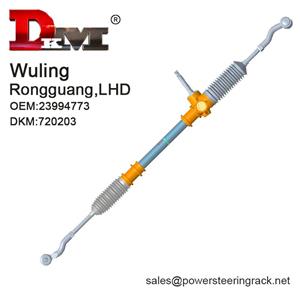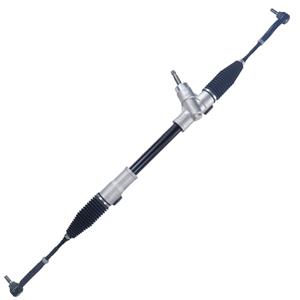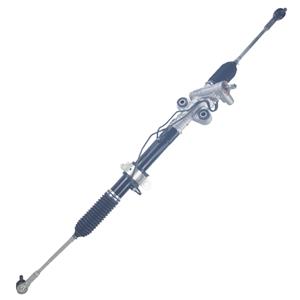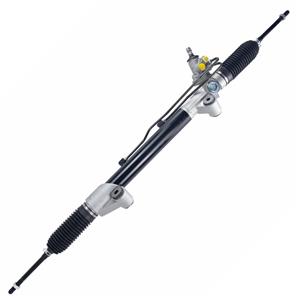Can rack and pinion gear get clogged?
In the steering system of a car, rack and pinion gear is a vital component that directly affects the vehicle's handling and safety. Whether it is a hydraulic power steering system or an electric power steering system, the precise coordination of rack and pinion gear is the basis for ensuring the smooth rotation of the vehicle's steering wheel. However, many car owners may not realize that these components inside the steering system may encounter "blockage" or be stuck by other debris, resulting in steering failure.
Although the word "blockage" traditionally refers more to the obstruction of fluid flow, in the context of rack and pinion gear, this problem refers more to functional disorders caused by factors such as the entry of external substances or wear and corrosion inside the system.
This news will discuss in detail whether rack and pinion gear will get clogged, its causes, effects and treatment methods, to help car owners better understand steering system problems and take necessary preventive measures.
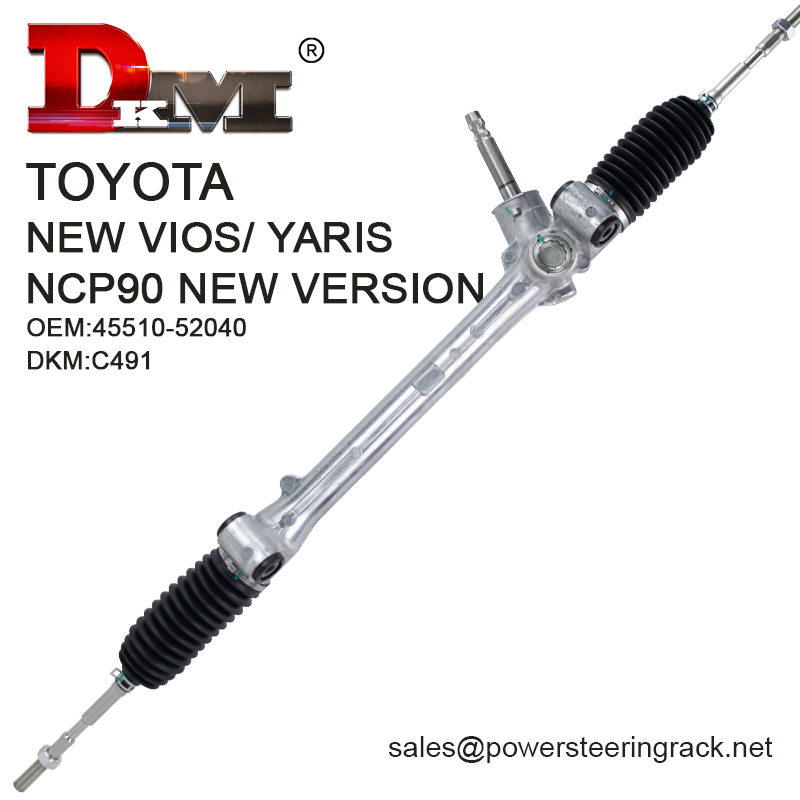
What is the role of rack and pinion gear in the steering system?
In the steering system of a vehicle, rack and pinion gear plays a vital role. Rack refers to a long toothed component, usually located in the steering rack of the car, and together with the pinion gear, it forms a mechanical transmission system. When the driver turns the steering wheel, the steering system converts the rotation of the steering wheel into the rotation of the wheel through the meshing of the pinion gear and the rack gear, so that the vehicle can travel along the predetermined trajectory.
● Rack: Generally a linear component with equally spaced tooth grooves on the surface. When the pinion gear meshes with the rack gear, a smooth force transmission can be achieved. The precise coordination between the rack and pinion gear is the key to ensuring the stability of the vehicle's direction and precise control.
● Pinion gear: The pinion gear is usually connected to the steering shaft, and through the meshing with the rack gear, the steering force is transmitted and the steering angle is changed. The rotation of the pinion gear enhances the controllability of the steering wheel through the hydraulic power-assist or electric power-assist system.
The normal operation of the rack and pinion gear requires precise meshing and good lubrication. In the entire steering system, the coordination of these two components directly affects the driving experience and driving safety of the vehicle.
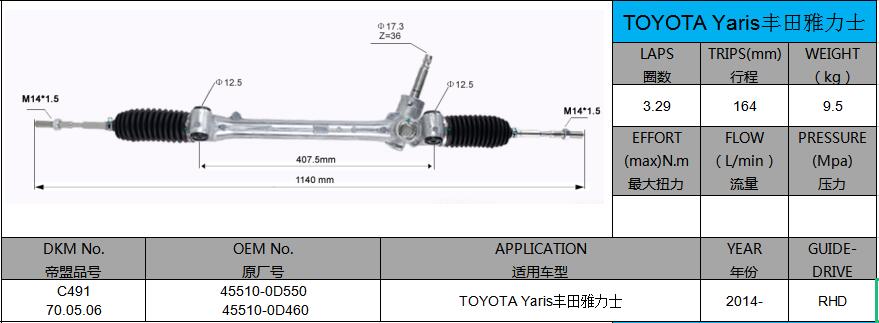
Will the rack and pinion gear be blocked?
Although rack and pinion gears should operate smoothly when working properly, in some cases, their working state may be hindered, resulting in so-called "jam". This "jam" does not refer to the entry of obstructions in the traditional sense, but refers to the failure of the rack and pinion gear to engage and operate normally due to the following reasons, resulting in steering system failure or poor operation.
1. Entry of external debris
The environment around the rack and pinion gear is relatively complex, especially in some harsh driving conditions, mud, sand, dust and other external debris can easily enter the steering system. These debris may accumulate between the rack and pinion gear, causing it to engage poorly. Especially in off-road or harsh weather conditions, the impact of external debris on the steering system will be more significant.
● Mud and dust: When the vehicle is driving in a muddy or dusty environment, foreign particles can easily penetrate into the steering system and adhere to the contact surface of the rack and pinion gear. Over time, these particulate matter will interfere with the precise fit between the rack and pinion gear, and even cause poor steering.
● Water and corrosive substances: When water enters the steering system, especially if it is not drained in time, the water will react with the rack and pinion gear, causing rust and corrosion of the components. Corrosive substances will damage the smoothness of the rack and cause poor meshing.
2. Inadequate or failed lubrication
Lubricating oil or hydraulic oil plays an important role in the normal operation of the rack and pinion gear. Lubricating oil can reduce friction and maintain smooth contact between the rack and pinion gear to achieve precise steering function. If the lubricating oil deteriorates or is not replaced for a long time, it will cause the lubrication effect to fail, causing wear, stagnation or poor meshing, resulting in a phenomenon similar to "blocking".
Aging, contamination or insufficient oil can cause dry friction on the surface of the rack and pinion gear, which will not only accelerate the wear of the components, but also cause the steering system to work poorly.
3. Carbon deposits or deposits inside the system
In the hydraulic power steering system, impurities and contaminants in the hydraulic oil may settle or form carbon deposits over time. These deposits accumulate on the hydraulic pump, pipes and contact surfaces of the rack and pinion gear, which may prevent them from working properly. Especially when the hydraulic oil has not been replaced for a long time, the sediment inside the system may seriously affect the meshing of the rack and pinion gear, resulting in poor steering and even system failure.
4. Wear and aging of the steering system
As the vehicle is used for a long time, the rack and pinion gear will gradually lose their original accuracy and fit due to wear. When the wear is severe, the gap between the rack and pinion gear may become larger, causing vibration and looseness inside the system, affecting the meshing performance. This wear may be caused by long-term use, or aggravated by poor hydraulic oil quality, system design defects, etc.

What are the effects of the rack and pinion gear being blocked?
When the rack and pinion gear is blocked or obstructed, the performance of the steering system will be significantly affected, and may even cause the vehicle to be unable to drive normally. The specific effects include:
1. Difficult steering
The most direct impact is that it becomes more difficult for the driver to turn the steering wheel when operating the steering wheel. Because the rack and pinion gear cannot engage smoothly and the steering force is not transmitted smoothly, the driver needs to consume more force to turn the steering wheel, especially when driving at low speed or parking, the steering will become abnormally heavy.
2. Steering instability
If the rack and pinion gear are not properly engaged, the steering wheel may become unstable. The driver may find that the steering wheel is difficult to control, or the vehicle may suddenly lean to one side during driving. This steering instability not only affects the driving experience, but also increases the risk of accidents.
3. Producing abnormal noises
When the rack and pinion gear cannot be smoothly engaged due to debris, sediment or lubrication failure, it usually makes abnormal noises. These sounds may be creaking, clicking or rubbing, which may make the driver feel uncomfortable or even impossible to ignore in severe cases.
4. Accelerated component wear
Friction between the rack and pinion gear may cause excessive wear if it is not properly lubricated or cleaned. This wear will further aggravate component damage and may even cause the rack or pinion gear to fail completely, requiring expensive replacement.
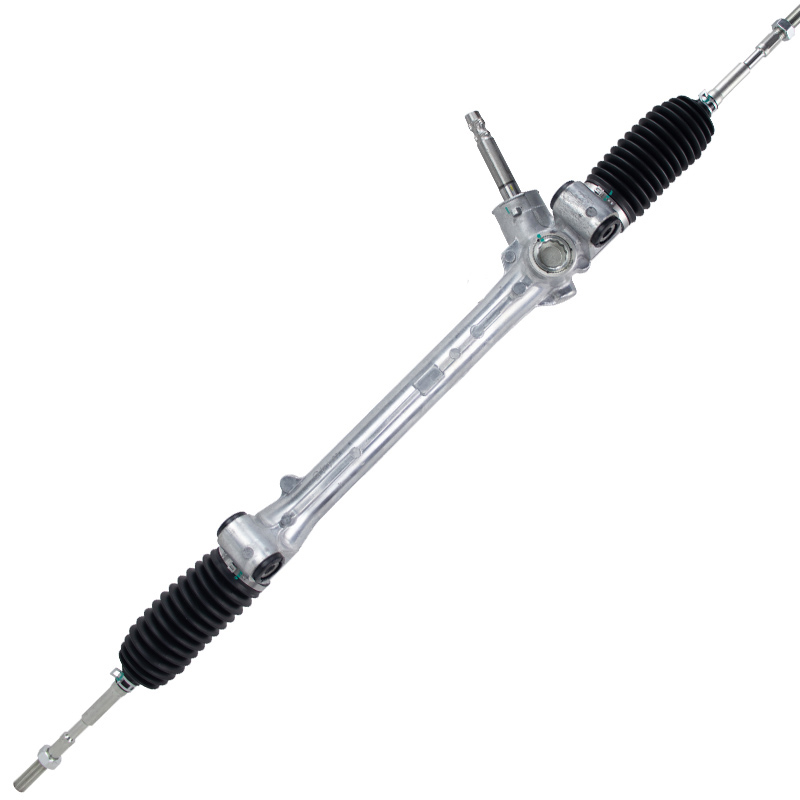
How to avoid rack and pinion gear clogging?
To avoid rack and pinion gear clogging, car owners need to regularly maintain the steering system and take some effective preventive measures:
1. Regularly check the steering system
Regularly check the condition and level of the hydraulic oil to ensure that the system is not contaminated. For old vehicles, it is very important to check the quality of the hydraulic oil, replace the deteriorated or contaminated hydraulic oil in time to keep the steering system working properly.
2. Clean up external debris
If the vehicle is often driven in a muddy and dusty environment, the debris around the steering system should be cleaned regularly to prevent mud and dust from entering the contact surface of the rack and pinion gear. If the system makes an abnormal sound, check and remove any possible blockages in time.
3. Maintain good lubrication
Make sure that the lubricant in the steering system is sufficient and replaced regularly. Lubricant is the key to reducing friction between rack and pinion gear. Ineffective lubricant can cause excessive wear and even jamming.
4. Pay attention to the driving environment
If the vehicle is often in a harsh driving environment, the owner should try to reduce the burden on the steering system and avoid driving for a long time under extreme conditions. If necessary, you can choose to install some protective devices to reduce the impact of external debris on the steering system.
Affordable, Custom Steering Gear Solutions
Guangdong Diamond Auto Parts Co., Ltd. (DKM) is committed to providing affordable, high-quality power steering gears for global markets. Whether you need steering systems for Toyota, Honda, Mitsubishi, or other brands, we offer customized solutions tailored to your needs. Our advanced production lines and quality control measures ensure that every product meets the highest standards. We offer competitive prices, promotions, and discounts for bulk purchases. Get in touch with us to receive a personalized quote and enjoy the best prices on the market.

